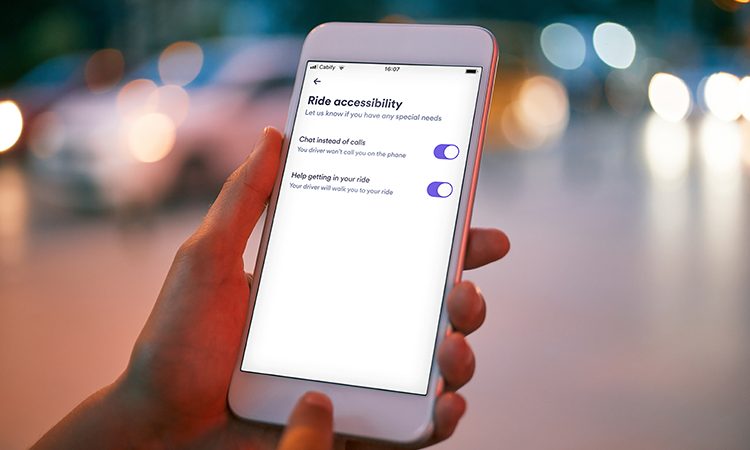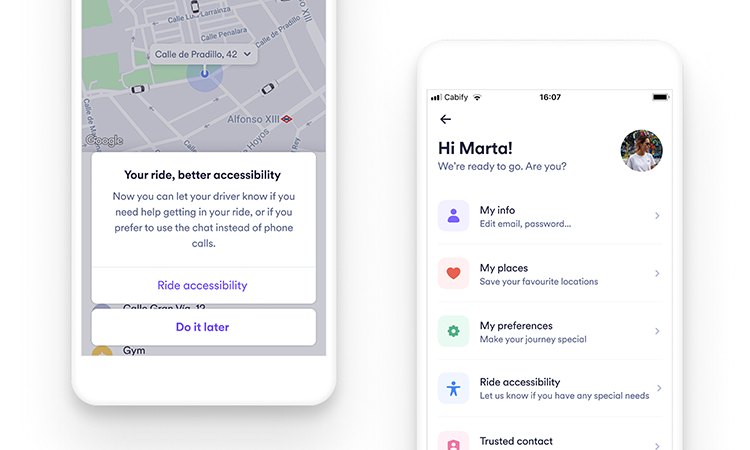Artificial intelligence: The new tool to make safe transportation accessible to all
- Like
- Digg
- Del
- Tumblr
- VKontakte
- Buffer
- Love This
- Odnoklassniki
- Meneame
- Blogger
- Amazon
- Yahoo Mail
- Gmail
- AOL
- Newsvine
- HackerNews
- Evernote
- MySpace
- Mail.ru
- Viadeo
- Line
- Comments
- Yummly
- SMS
- Viber
- Telegram
- Subscribe
- Skype
- Facebook Messenger
- Kakao
- LiveJournal
- Yammer
- Edgar
- Fintel
- Mix
- Instapaper
- Copy Link
Posted: 12 December 2023 | Carlos Herrera Yagüe - Cabify | No comments yet
Carlos Herrera Yagüe, Chief Technology Officer at Cabify, explores how artificial intelligence is transforming transportation accessibility, blending traditional methods with modern technology to create inclusive, efficient and personalised travel experiences.


Properly regulated, well-used and well-understood artificial intelligence (AI) is an incredible tool that will help us to achieve and destroy even physical barriers to improve our lives”
There has been a lot of fuss about artificial intelligence (AI) throughout 2023 – its uses and how it will affect our everyday life. While we have been amazed by the many things that AI can achieve nowadays, safety concerns have also risen. As emphasised by the European Union (EU), “the way we approach AI will define the world we live in, in the future. To help build a resilient Europe for the Digital Decade, people and businesses should be able to enjoy the benefits of AI while feeling safe and protected.” And I couldn’t agree more. Properly regulated, well-used and well-understood AI is an incredible tool that will help us to achieve and destroy even physical barriers to improve our lives.
Taking it back to the basics
In a world in which almost everything is digital… we decided to include the option for users to pay with cash”
In 2017, we did something at Cabify – a technological company born in Spain 12 years ago – that might sound crazy to many people, especially youngsters. In a world in which almost everything is digital; where we can walk around wireless, cardless, carless; where we can pay using our phones, or with the touch of a credit card or with our smartwatch, we decided to include the option for users to pay with cash.
We introduced a robust cash system because, in many of our markets, it seemed relevant to do so. Furthermore, there are people, particularly the older generation, who prefer paying with cash. As a result, today, more than half of Cabify rides are paid with cash. Even in Spain, a country where supposedly a wider variety of payment methods is used, 20% of our trips are paid for in cash. At the end of the day, there are many users who just feel more comfortable paying in cash.
So, yes, they pay in cash, but they still have access to all of the technological improvements that Cabify has to offer, including GPS-tracked trips, reservations and our accessibility menu, to name a few. What I mean to say is that, by including cash payment options, we enable more people to access all that our service and technology can provide them – all of these new features that they did not have access to before.


Credit: Cabify
Let’s take it a step further. For people that are not familiar with technology, using an online service like Cabify often involves relying on their nieces and nephews or grandchildren to book a trip for them or to help them in downloading and installing the app, if they have a smartphone. In addition, it is not unthinkable to have ChatGPT or a similar voice-assisted system that can accurately respond to inquiries. So, what if we developed an option for people to book a Cabify service via voice commands? What percentage of the market would consider it a valuable feature to simply make a phone call and arrange a ride, reminiscent of the older, phone-based approach? Again, something that sounds outdated, but when considering all of the technological advantages that Cabify’s technology provides within every single ride, implementing such a system could significantly enhance accessibility for those who cannot easily download an app.
Reservations and untapped potentials of AI
Embracing and implementing these new tools as soon as possible is key to developing new solutions to make technology easier and more useful for everyone”
Artificial intelligence can create solutions and experiences that, until a few months ago, we could only dream of. This technology will allow us to create a scalable system that will make it easier for these cutting-edge solutions to become a reality. These recent developments give us new tools that allow us to reach many more people – a lot more than we realise. Whether it’s the cash payment option or the possibility of voice reservations, the more technological barriers that we can lower for people who are not used to technology, the more that people will be able to access essential services like safe transportation in a city.
Embracing and implementing these new tools as soon as possible is key to developing new solutions to make technology easier and more useful for everyone. This is key for the future, especially in terms of accessibility. It is important to regulate this new eco-system and build, as the EU says, a “trustworthy AI that creates a safe and innovation-friendly environment for users, developers and deployers.”
If we shift our focus to the transportation sector, there are countless opportunities, including the ones that I’ve mentioned, abound. But the first thing that AI could be used for is to optimise the use of resources. We have millions of ships, planes and cars deployed, as well as millions of paved kilometres of railroad tracks, and the challenge of co-ordinating and organising all of these is daunting; even at a mathematical level, it is almost impossible to quantify.


Credit: Cabify
I honestly don’t know if we’ll ever reach the optimum by interconnecting transportation systems – a system that can tell us, “Okay, you want to go from A to B, so the way to move with less energy, with less CO2 emissions, with less urban area devoted to transport, is this one”. But AI will enable us to discover new ways that we can optimise and organise resources that are clearly better than what we have now, in a way that probably would have never crossed our minds.
One of the fears regarding AI is the role that people will play or stop to play once it is put into place. For example, when it comes to planning a route, one thing that we have found at Cabify is that, when there are humans behind the wheel, it is better to let them choose in some situations. They choose based on preferences that we will never be able to parameterise. For example, there might be areas where they don’t want to go because there are too many potholes, and they don’t want to damage the suspension of the car. What the system can do is propose three trips and learn from the options tthat hey choose and their preferences, and then, technology will offer them a route based on their preferences.
Although these preferences might still change in the future, AI will help us to provide a more personalised experience to everyone.
Of course, there is still a lot to learn, a lot to discuss and many things to define before AI can be implemented in the best way possible. But, let’s consider the possibilities that all of these tools could provide when used properly, particularly in the transportation sector.
I personally cannot wait to see what comes next and the potential implementations that could enhance transportation safety and accessibility for all. But, as discussed, let’s prioritise one step at a time, with AI coming after. Our primary focus remains on continuously improving lives.


Related topics
Accessibility, Artificial Intelligence, Journey Planning, Mobility Services, Passenger Experience, Ticketing & Payments
Issue
Issue 4 2023
Related modes
Ride-sharing & Car-sharing
Related countries
Spain
Related organisations
Cabify
Related people
Carlos Herrera Yagüe








